Anticipating winter, we feast on, and preserve, the harvest
Eating communally has a long history at DR, and it remains a strongly held belief that kitchen co-ops are an important aspect of integrating new people into village life and fulfilling an ongoing social need for connection between village members.
I like to hear Bob at coffee group tell the story about the Sunflower co-op, that operated out of the Common House. According to legend, this co-op had 22 members. It might be like a fishing story, where the fabled number of members grows with each retelling. The co-op finally collapsed under its own numbers, because it became too difficult to organize that many people around eating needs and cooking logistics. As a former professional cook, imagining cooking for that many people on a daily basis boggles my mind.
Kitchen co-ops come and go, and lately, they’ve been going. The Hub Collective members decided to open our kitchen co-op a bit earlier than planned because there was such a need and want from new people to eat in this way. And still, we are only able to accommodate up to eight adults, given the space size. I am already planning ahead to next summer, where we can put out additional tables on the outdoor covered patio for more people.
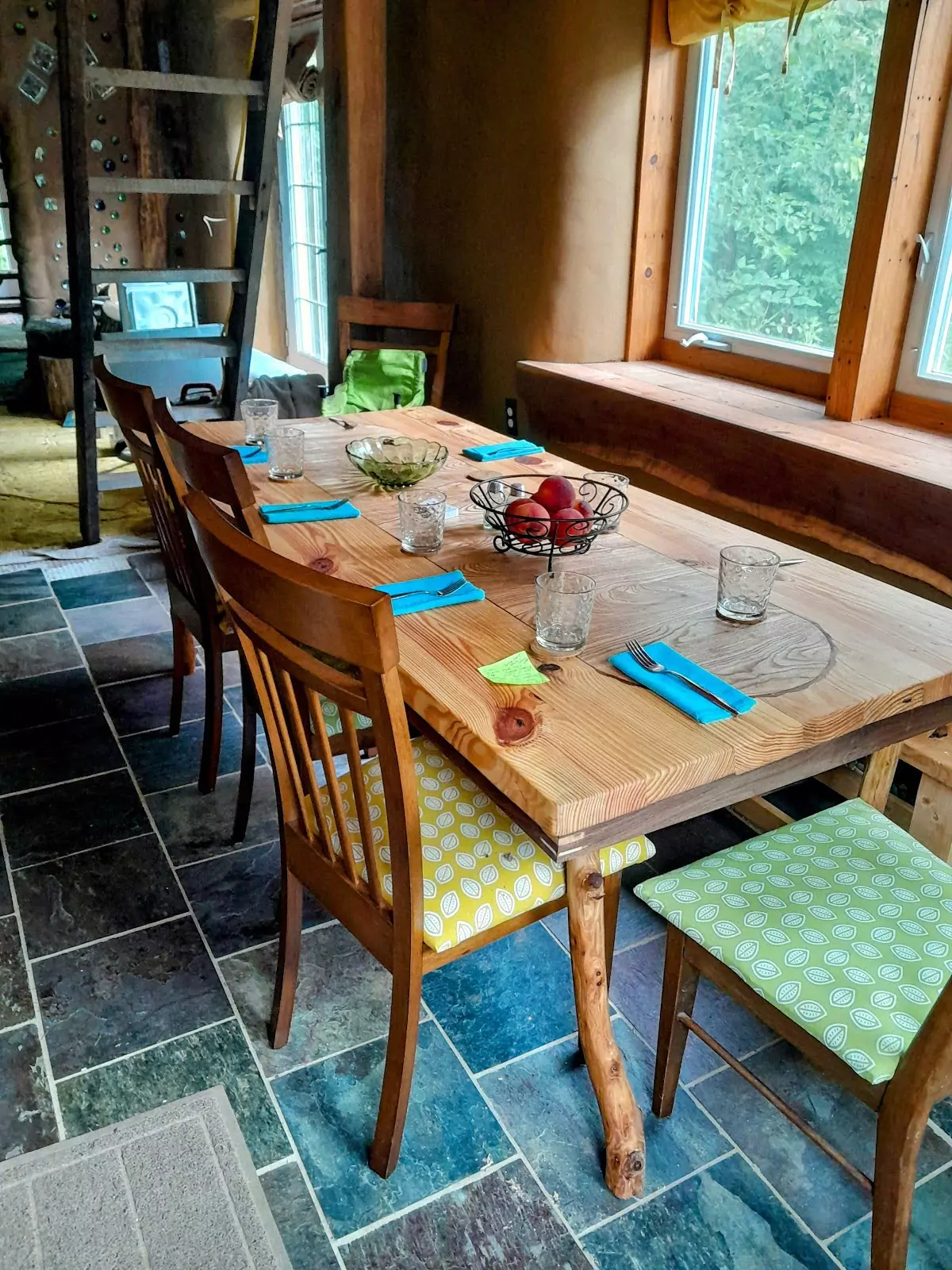
But still, in my opinion, there are definite limits to the number of people in any one kitchen co-op before the logistics start to become less efficient. The bigger the group, the harder it is to recruit people to cook. People new to DR are often inexperienced in cooking healthy food, let alone for 15-20 people. That’s taking turns churning out dinner each and every day, year round. And it’s harder to form a close connection in the noise and confusion of a large group of people, let alone meet their dietary needs.
The launching of the Hub co-op kitchen dovetailed nicely with the formation of a food preservation co-op this month. Members of the food preservation co-op have been picking produce, hauling produce, chopping produce, sterilizing jars, packing jars, and boiling jars of pickles, tomatoes, beans, and corn relish for three weeks or so.
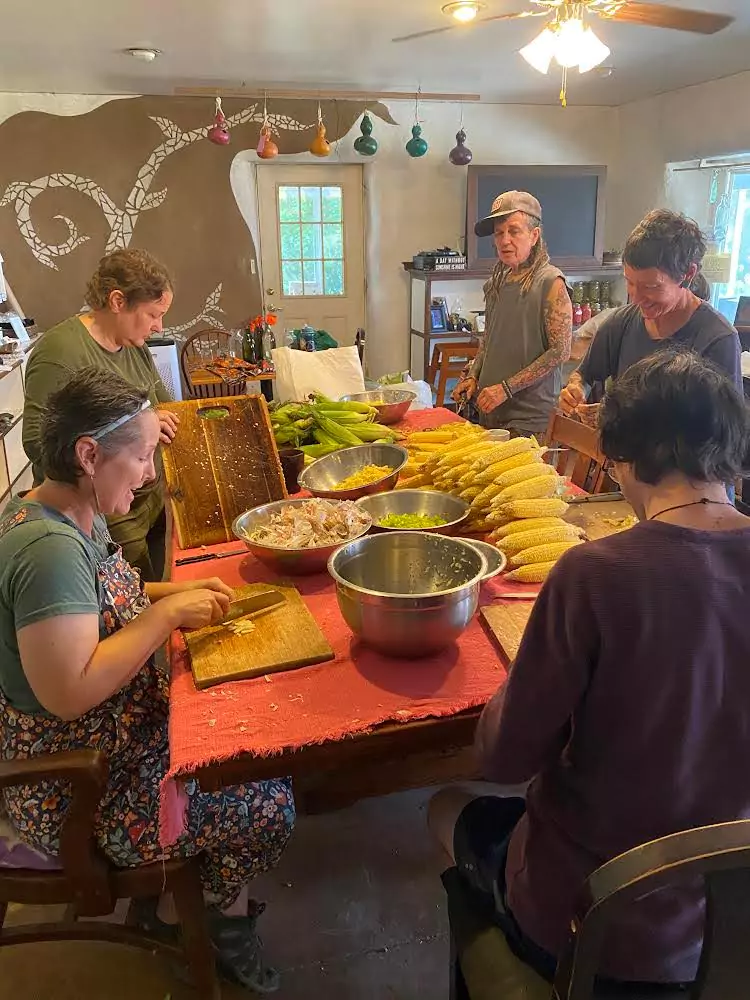
The Hub co-op just happened to open at a time of year when it’s mostly too late to grow summer produce and herbs. So members of the kitchen co-op have been putting in hours at the food preservation co-op so that we can have some canned goods to add to our pantry for the winter. I just got back from harvesting 100 pounds of tomatoes from a neighbor just down the road, whose tomato crop outgrew his capacity to preserve it, so he invited the food preservation co-op to come and pick what they wanted.
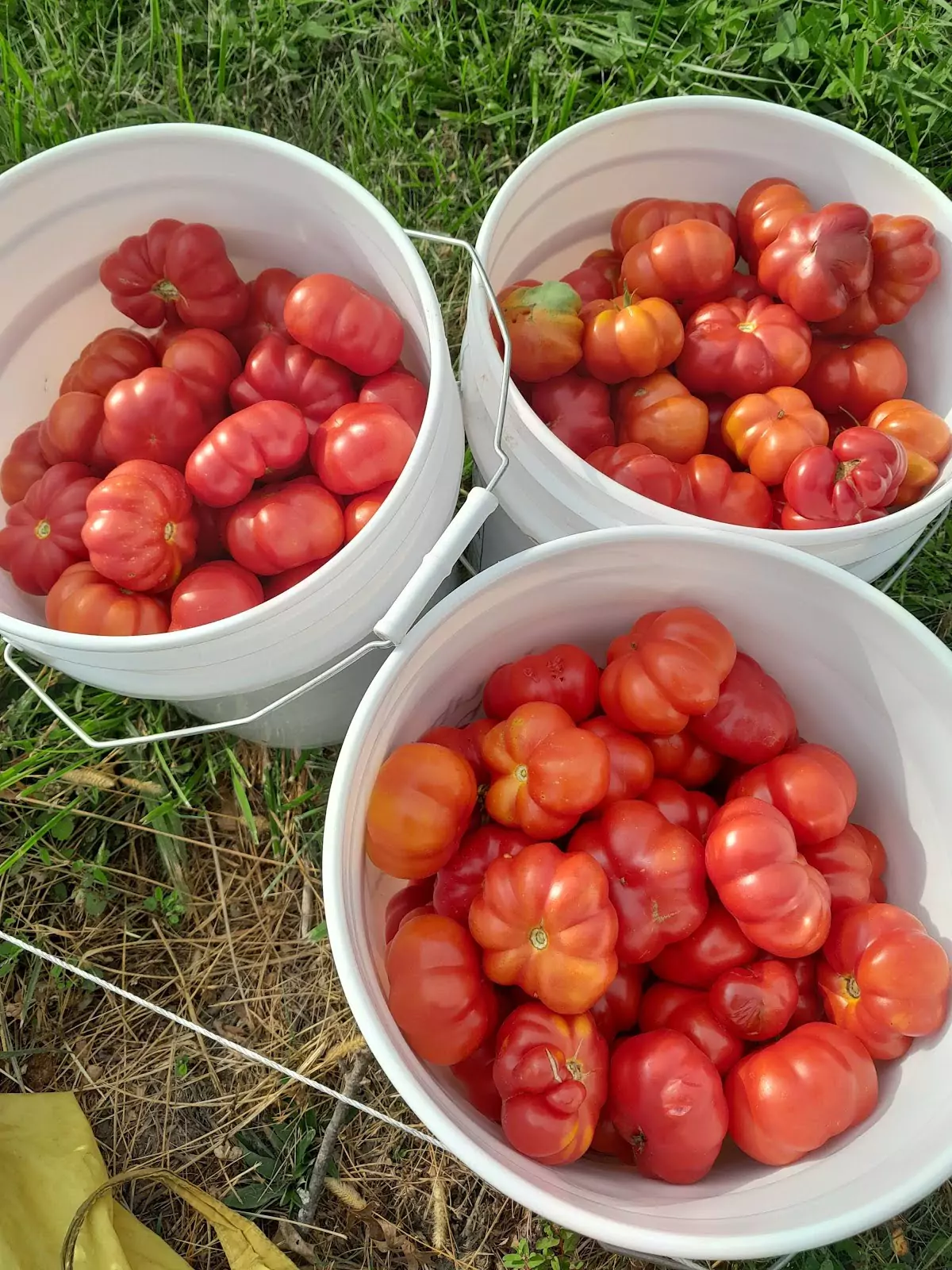
When I first moved to DR seven years ago, I was recruited to cook at Thistledown co-op kitchen by Cob, the self-proclaimed benevolent dictator presiding over the kitchen. I had been cooking professionally for nearly 20 years by the time I got to DR, and the focus at the co-op kitchens on eating healthy, tasty food was right up my alley.
I had moved to a new place, my grown kids were back in California and I had recently left a relationship of 37 years. To say I was emotionally compromised is an understatement. So to find a place right away with a small group of people who loved to cook and eat delicious food, put me at ease. I could ask my newbie questions at dinner and I learned a lot by observing close up some of the cultural norms of the community I had adopted as mine.
There is also a long standing history and commitment to preserving food at DR. There are stories of groups of early members canning on a wood stove outside in the heat of late summer. Cob consistently cans, freezes, dehydrates and vacuum packs the largesse of the season, as well as anything he grows himself, and feasts on it all winter long. Ironweed kitchen, for many years, maintained a very large veg garden and their focus was to rely as much as possible on that garden for their co-op kitchen meals. Ironweed also had Ted as a member, and he made cheese and yogurt for the co-op, eventually expanding to selling dairy products to the village. Now that he has left the community, the dairy co-op continues his legacy, and makes a point of teaching cheese making to interested work exchangers.
Robey and PK are two of the greater contributors of time and produce to the food preservation co-op. They are fun to work with, and very careful around the hot water and lifting hot heavy jars out of the big canning kettles.
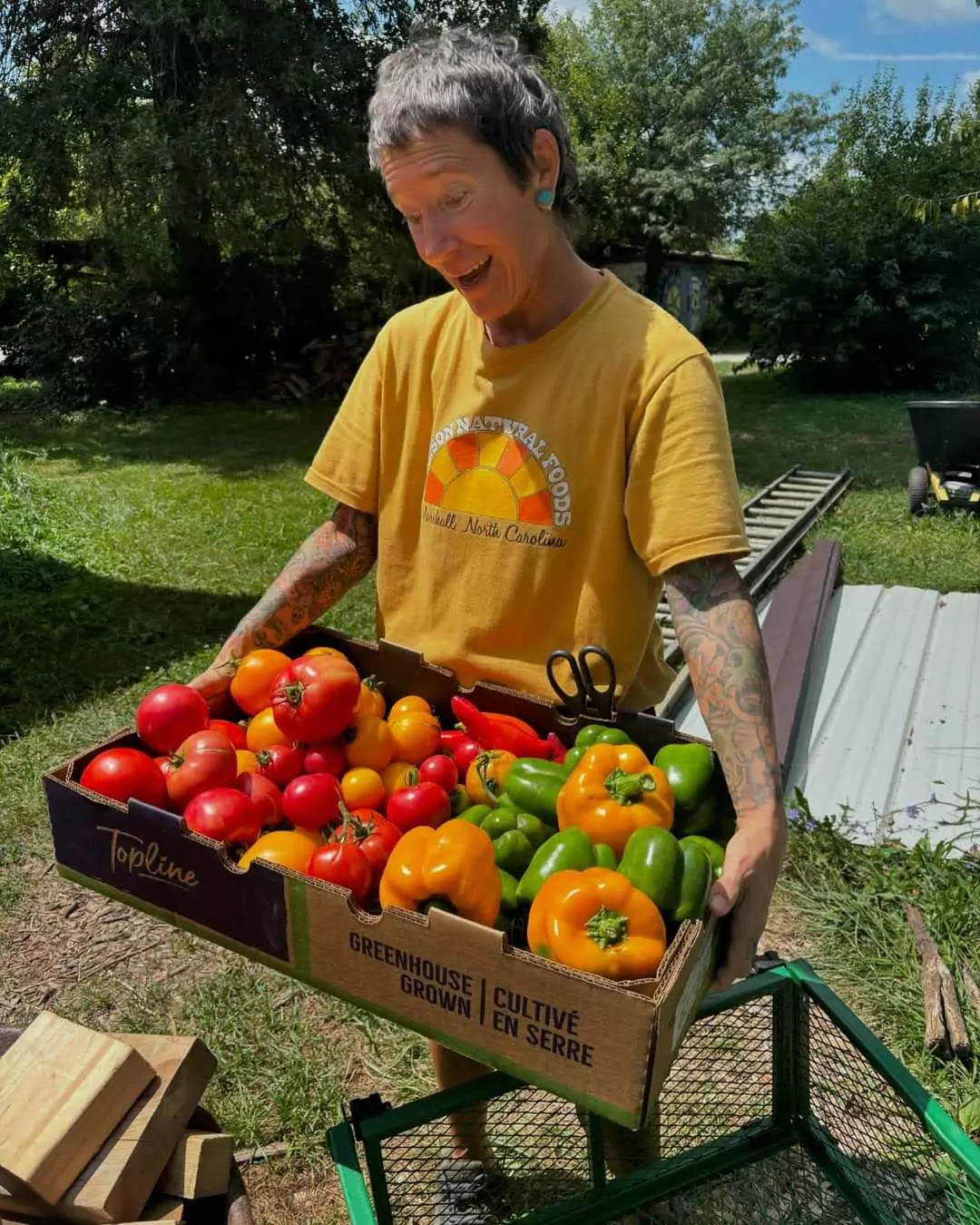
So how does one launch a new kitchen co-op? One step at a time, depending on what’s a priority to the members of the co-op. I’ve had a hankering for parsley all summer, so I bought some fresh herbs to grow on the window sill.
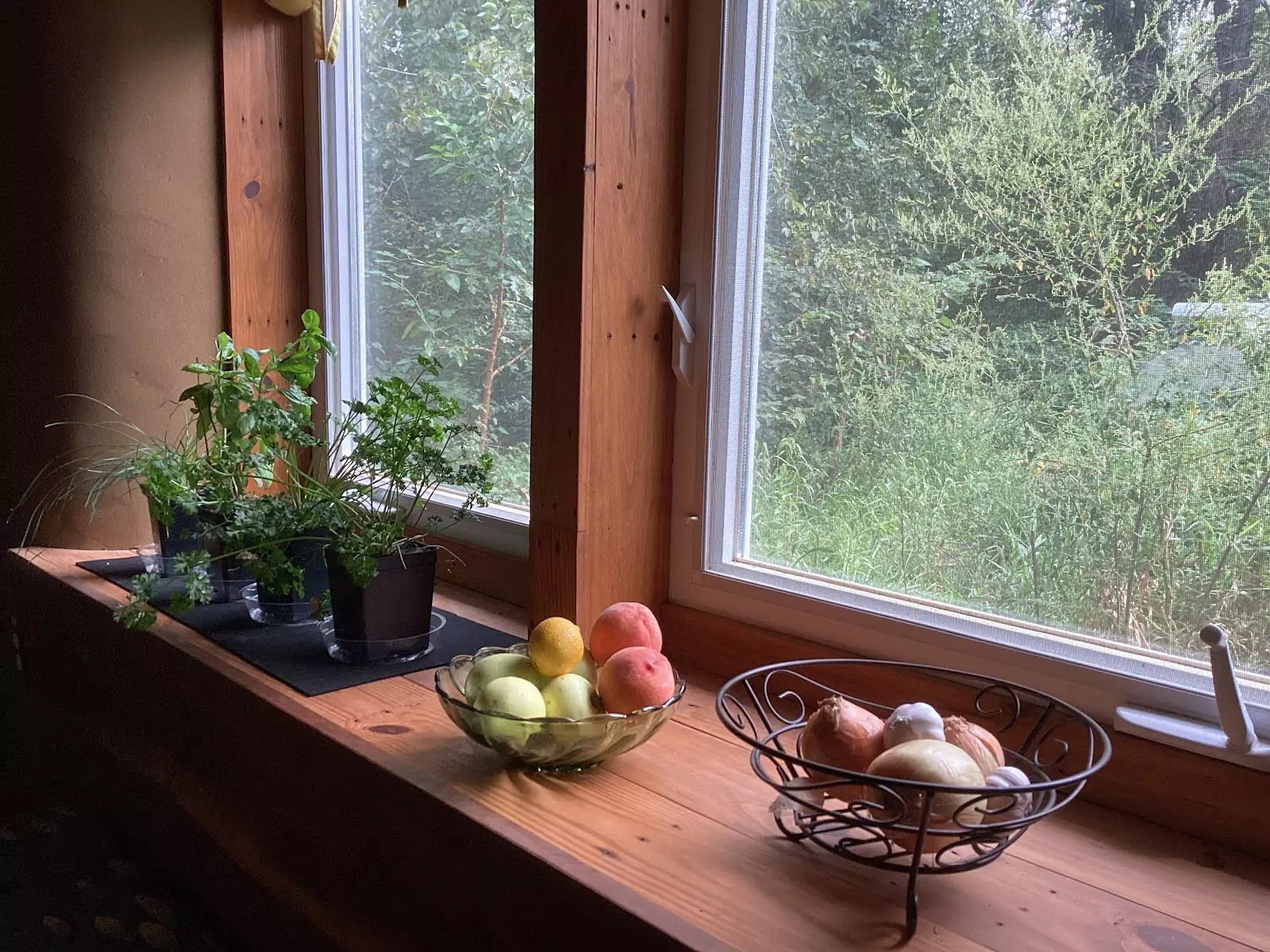
Fresh fruit and vegetables, with leftover canned and dried goods from all of our stashes, is a starting place. The food preservation co-op put together a deal to buy non-gmo corn in bulk, so our co-op kitchen hopped on that. We don’t have a working full sized refrigerator yet, so I laid the corn out on the Hub’s cool slate floor while it waits to be eaten. We weren’t able to get enough to make it worth dehydrating or canning, so we’re eating a lot of it right now, as steamed corn cobs, or off the cob on salads, or as a cucumber and corn tangy side dish. Ciaran is focusing on food foraged from DR surrounds, and any given cook shift, there will be a basket of clover blossoms, mushrooms, cattail stems and Ironweed pods on the counter to add to the meal.
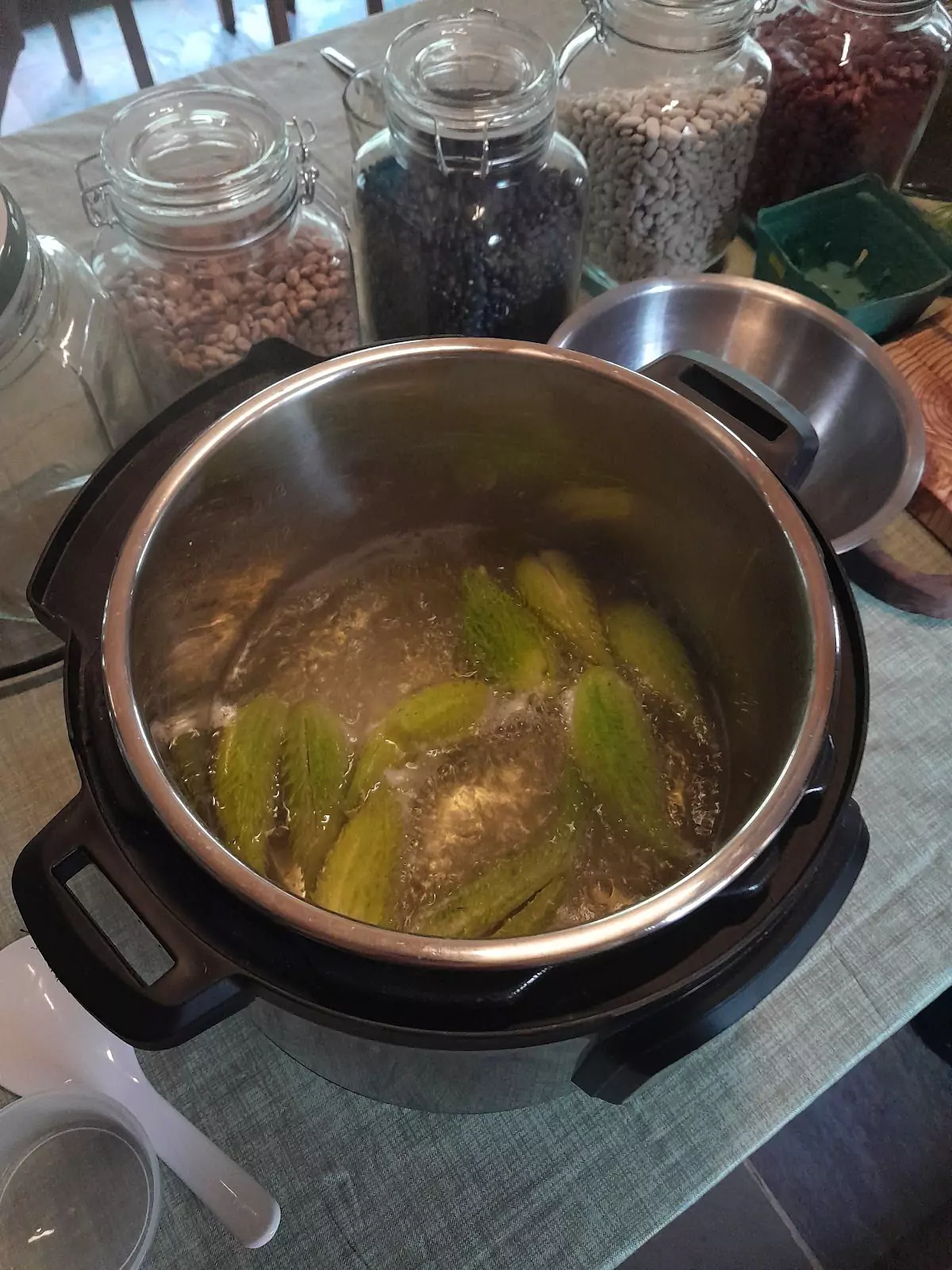
We have started building an addition on the north side of the building, with a full pantry and a utility room for water tanks to provide hot water to the building. When it’s done we’ll have more room for a winter’s worth of preserved food
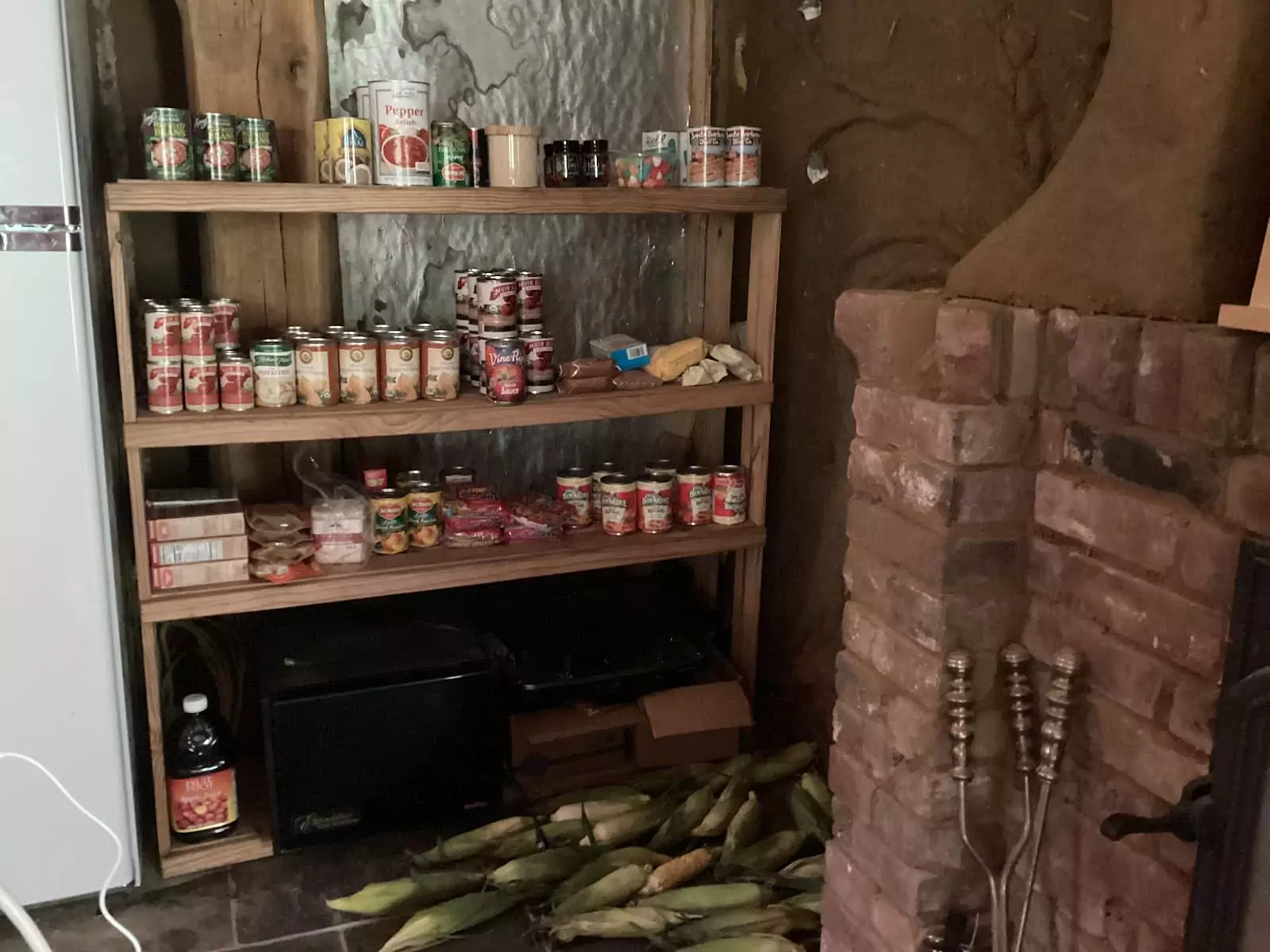
Critter kitchen is another co-op kitchen at DR, also with a culture all its own. Critter kitchen does the majority of hosting and feeding work exchangers who spend anywhere from one week to months at DR. For many years, the Critters have cooked healthy food on a budget, expanding and contracting members as the need arises. This kitchen used to be the partying place, and as the core group has aged, maybe less so. At least, there’s less hootin’ and hollerin in the evening that I can hear out my west door at Morel in the summer time. Critter kitchen disbands each winter, starting up each spring.
And so we work each day, strengthening our chops on cooking for a group and trying to make the food tasty, healthy, and beautiful. And each week we have another piece of the kitchen up and running, running against the clock that brings winter closer and closer.

Liz Hackney is the editor of this newsletter and a writer for the Hub project on Substack. To subscribe to weekly posts on the Hub project and now the Hub kitchen co-op, go to thehubcollective.substack.com.
